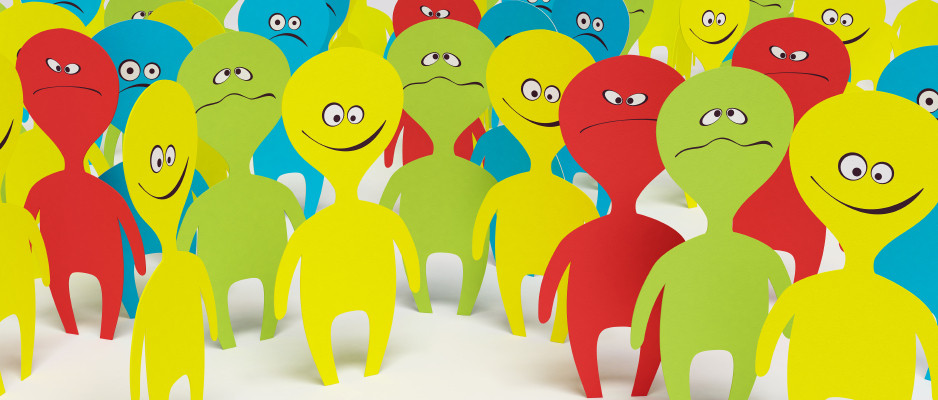A few days ago I was driving down the main street that crosses my town. I stopped in a traffic light waiting to turn left, when all of a sudden I heard loud sounds of weeping. The sounds stood out above the noise of cars, buses, and roadwork. Animal-like sounds of crying blended with mumbled, unintelligible words. I looked around, but could not identify where they were coming from. When the light finally changed, as I started to turn, in the corner of my eye I saw an old man in the car next to me. His hands gripped the wheel firmly and his face was distorted with agony, crying and screaming. Seconds later I saw his car in my rearview mirror driving away, and he disappeared. In a busy street, surrounded by thousands of people, connected to millions of people through a touch of his smartphone’s screen, this man was alone. His cries could only be heard by few, and seen by even fewer. He was trapped in his car, in motion, while experiencing a crisis that made him weep and scream out loud. Loneliness may very well be the black plague of the 21st Century. Young adults leave home for college, and then move to a big city to find a job. Their old friends from their hometown and college move to other jobs in other places, and relationships turn from real-life to Facebook. The lonelier they feel, and the shyer and less emotionally-stable they are, these young individuals go on Facebook more often [1], which in turn causes a decline in their positive emotions and their satisfaction with life [2]. They then settle and establish families in their new place, far from their parents, siblings, and friends, and when left in an empty nest they often age alone and isolated. The Campaign to End Loneliness [3] in the UK found 800,000 people to be “chronically lonely”, most of which are among the elderly. Five million people identified TV as their primary source of company. The more crowded our habitats are, and the more digitally interconnected the world turns, the lonelier we become. Four years ago I went on a solo motorcycle ride on a quest to finding inner peace [4]. For five weeks I was alone on the road, riding through the back roads away from the cities. I only met a handful of people every day, but I rarely felt lonely. Wherever I went, I was a part of a community of bikers and nomads. Conversations were sometimes short, but always meaningful. The interaction with others was authentic and real. Perhaps this is what the crying man in the car next to me needed. To feel someone’s hand on his shoulder. To see the compassion another person’s eyes, and to hear it in someone else’s voice. In his most dire time, everyone was there around him, but not a single person was there for him. [1] Ryan, T., & Xenos, S. (2011). Who uses Facebook? An investigation into the relationship between the Big Five, shyness, narcissism, loneliness, and Facebook usage. Computers in Human Behavior, 27(5), 1658-1664. [2] Kross, E., Verduyn, P., Demiralp, E., Park, J., Lee, D. S., Lin, N., … & Ybarra, O. (2013). Facebook use predicts declines in subjective well-being in young adults. PloS one, 8(8), e69841. [3] http://www.campaigntoendloneliness.org/ [4] http://www.RideOfYourLife.com
A Crying Face in the Crowd


